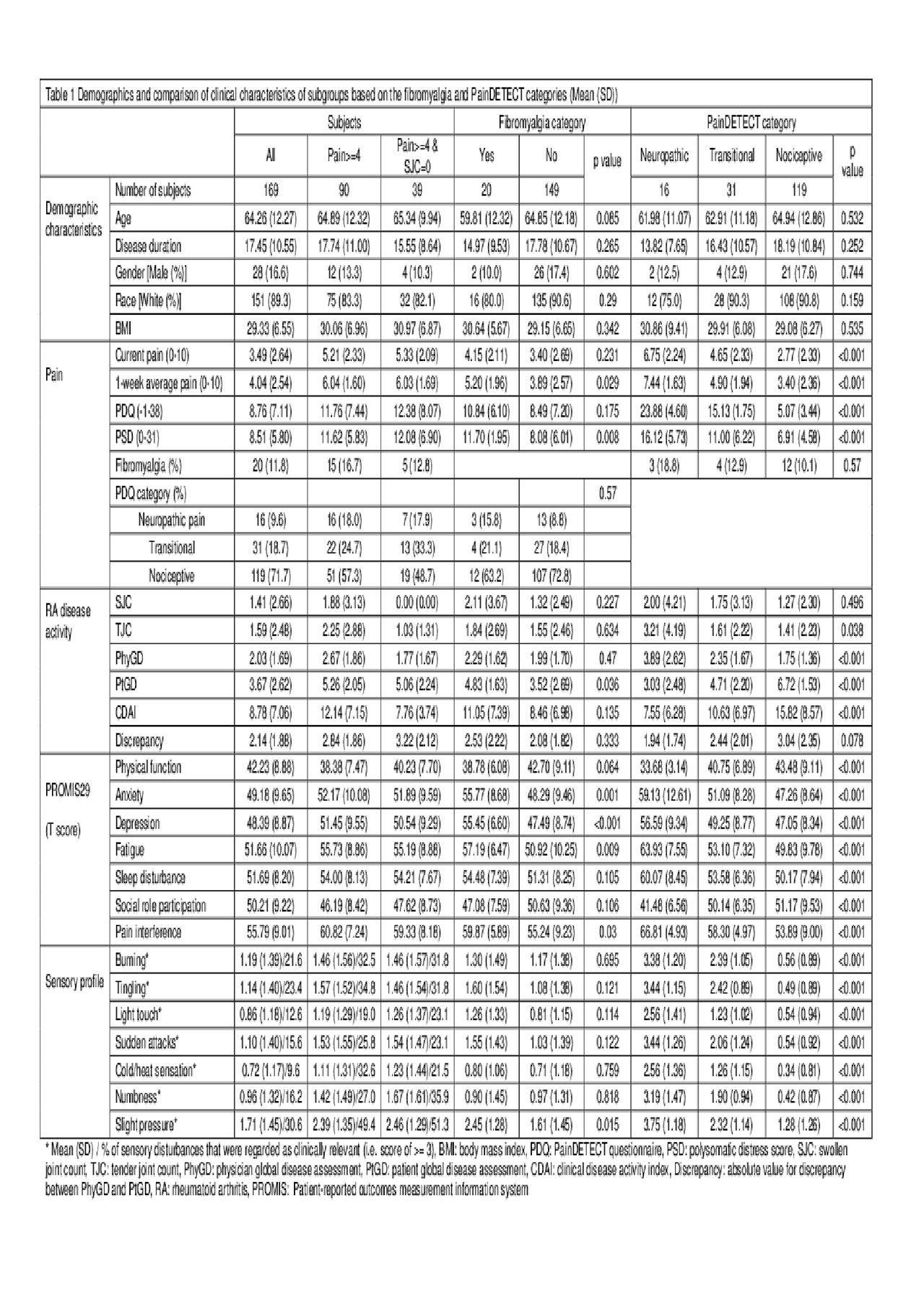Session Information
Date: Tuesday, November 12, 2019
Title: RA – Diagnosis, Manifestations, & Outcomes Poster III: Comorbidities
Session Type: Poster Session (Tuesday)
Session Time: 9:00AM-11:00AM
Background/Purpose: Our objectives were (1) to identify similarities and differences of pain symptoms identified by fibromyalgia (FM) and neuropathic pain (NP) screening tool (2) to compare pain qualities and their relationship with rheumatoid arthritis (RA) disease activity.
Methods: 169 RA patients enrolled in the University of Pittsburgh Rheumatoid Arthritis Comparative Effectiveness Registry (RACER) underwent a clinical evaluation and fulfilled 3 self-report questionnaires (PainDETECT, Patient-Reported Outcomes Measurement Information System (PROMIS) 29, Widespread Pain Index/Symptom Severity Scale). The results of the clinical evaluation and questionnaires were then compared.
Results: 20 patients (11.8%) met the fibromyalgia criteria, whereas 16 patients (9.6%) were found to have neuropathic pain. However, only three patients were categorized as FM among those patients who were classified as NP. PainDETECT and polysomatic distress score were significantly correlated with pain levels, RA disease activity, and all PROMIS domains. (Figure 1) No significant difference in the swollen joint count was found regardless of the presence or absence of FM or NP. Tender joint count, patient & physician global disease assessment (PtGD, PhyGD), and clinical disease activity index (CDAI) were significantly higher in patients with NP vs those without NP, whereas only PtGD was higher in patients with FM vs those without FM. (Table 1) Significantly higher scores were found for all PROMIS domains and sensory profiles in patients with NP, while anxiety, depression, fatigue, pain interference, and slight pressure-associated pain were increased in patients with FM. (Table 2)
Conclusion: This study highlights the differences between FM and NP in association with RA disease activity and PROMIS29 domains and demonstrates the PainDETECT can be a useful tool in identifying clinical phenotypes of RA patients.
To cite this abstract in AMA style:
Hwang Y, Zhu L, Moreland L. Comparison Between Fibromyalgia and Neuropathic Pain in Patients with Established Rheumatoid Arthritis [abstract]. Arthritis Rheumatol. 2019; 71 (suppl 10). https://acrabstracts.org/abstract/comparison-between-fibromyalgia-and-neuropathic-pain-in-patients-with-established-rheumatoid-arthritis/. Accessed .« Back to 2019 ACR/ARP Annual Meeting
ACR Meeting Abstracts - https://acrabstracts.org/abstract/comparison-between-fibromyalgia-and-neuropathic-pain-in-patients-with-established-rheumatoid-arthritis/


